|
|
 |
|
|
|
 |
 |
 |  |  |
 |

NAVIGATIONS: PALESTINIAN VIDEO ART, 1988 to 2011

Friday April 6 to Thursday April 26
Barbican Centre, Mezzanine
Works by:
BASMA ALSHARIF / AYREEN ANASTAS / TAYSIR BATNIJI / SHADI HABIB ALLAH /
MONA HATOUM / KHALED JARRAR / KHALIL RABAH / JAYCE SALLOUM & ELIA SULEIMAN / LARISSA SANSOUR / SHARIF WAKED / MANAR ZUABI

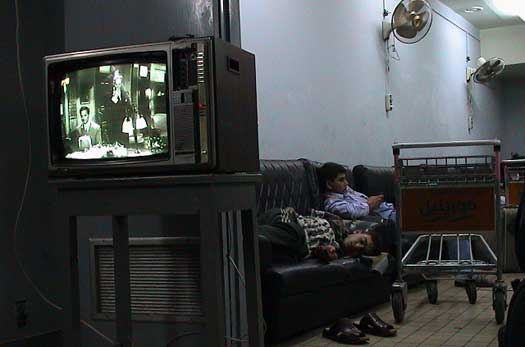
Transit, Taysir Batniji (2004)
Navigations: Palestinian Video Art, 1988 to 2011 celebrates the breadth and vitality of creative practices developed by artists working in Palestine and the diaspora over nearly a quarter of a century. During this time, generations of visual artists have enlisted the full spectrum of production techniques to explore a fascinating variety of aesthetic sensibilities and conceptual concerns. The fifteen works presented in Navigations offer a route into this rich creative terrain, tracing different trajectories and themes in the work of a dozen highly distinctive artists.
LEFT: In Between Manar Zoabi (2005), image: Issa Friej, Al Ma'mal Foundation. RIGHT: Measures of Distance, Mona Hatoum (1988), courtesy of the artist and LUX, London.
Given the motifs of diaspora and displacement that imbue many of these artists� practices, it is perhaps unsurprising to find works here characterised by questions of mobility and fluidity: the virtual and the real, the past and the future, the spectacular and the quotidian, the near and the far... each collide and grow wilfully entangled in many of the pieces shown. That a parallel turn to movement also emerges strongly in recent work from occupied Palestine raises the intriguing suggestion of an emphasis on passage and place: one shared by artists whose immediate conditions of practice might otherwise suggest less affinity in relationships toward the spatial.
LEFT: Run Lara Run, Larissa Sansour (2008). RIGHT: Chic Point, Sharif Waked (2003).
But if such motifs hint at a certain familiality transcending the works brought together in Navigations, they do so only quietly, provisionally. Any idea of a �national� artistic vernacular is rapidly disrupted by the sheer diversity of subjects, tools, and influences encountered in these pieces. Artists can be found applying a variety of storytelling techniques, from minimalist portrait to faux documentary. Others use ironic appropriation to spike representational economies. Some wield state of the art digital tools to move seamlessly between the transparent and the real, the figurative and the surreal.
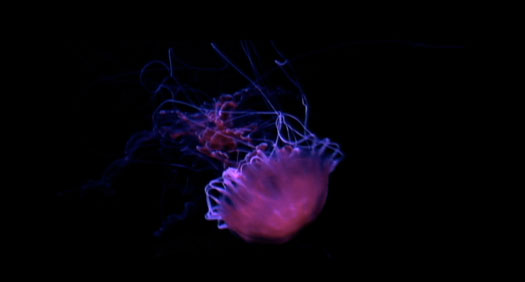
We Began by Measuring Distance, Basma Alsharif (2009).
Navigations revels in the variety of creative adventures undertaken by Palestinian artists in the video medium since the 1980s. Its 15 pieces invite a sampling of this history, and a celebration of its aesthetic and conceptual breadth.
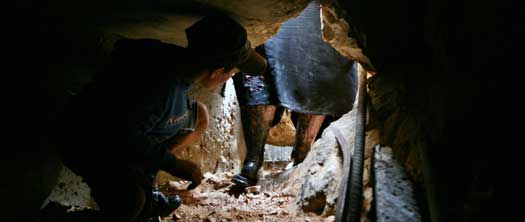
Journey 110, Khaled Jarrar (2009).
The exhibition is curated by the Palestine Film Foundation and ArtSchool Palestine. It is the 5th to be held alongside the annual Palestine Film Festival and the first to explore video art.
The exhibition is free to the public throughout and is made possible with the generosity of contributing artists and galleries, and through the festival�s funding and venue partners.
24 Images of Palestine, 1986 � 2010: Photographs by JC Tordai

Exhibition hosted at the Barbican Centre, Mezzanine, 24th April � 15th May 2011. Entry free.
The 2011 Photography Exhibition consisted of a series of monochrome prints by JC Tordai. Spanning 3 decades of reportage from across Palestine, the selection was especially chosen by the artist for the 2011 Festival.
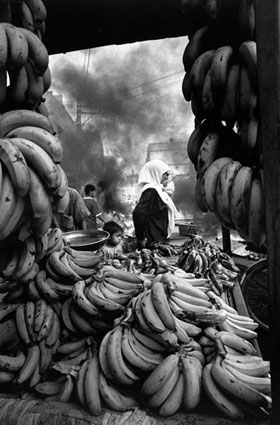
Gaza City, 1993. JC Tordai
�The photographs shown here were recorded across a quarter of a century, during my periodic assignments to the region. They offer glimpses into everyday life in the streets and in the fields, as I have seen it... the consequences of conflict, of dispossession, and of economic struggle.�
� JC Tordai

JC Tordai works with PANOS PICTURES (www.panos.co.uk) and is the coauthor with Harvey Morris of Into The Promised Land (Cornerhouse Publications UK, 1991) and with Graham Usher of A People Called Palestine (Dewi Lewis Publishing UK, 2001).
Intimate Portrayals: Work by Taysir Batniji and Noel Jabbour

Exhibition hosted at the Barbican Centre: April 26th to May 14th 2010.
Admission free.
Intimate Portrayals showcased work by Palestinian artists Taysir Batniji and Noel Jabbour. Both artists explore Palestinian life through intimate encounters with the everyday, allowing viewers rewarding respite from the standard newscast of images from Palestine.

Noel Jabbour�s �Palestinian Interiors� comprises a series shot in the Aqbat Jaber refugee camp, as well as in Hebron and Jerusalem. Her studies take us into the intimate space of everyday family life by focusing on decorated walls within Palestinian homes.
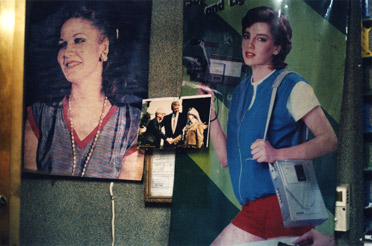
(Image: Palestinian Interior No. 12, Hebron, Noel Jabbour, 1994, Courtesy: The Artist)
�Fathers� by Taysir Batniji was shot in the Gaza Strip. His work follows portrait photographs found in shops, cafes, factories and other places of daily work and life. Rarely depicting the current proprietor or resident, but often a deceased founder or ancestor, the series explores tributes to an absent �father� who remains present in the place to which he brought life.
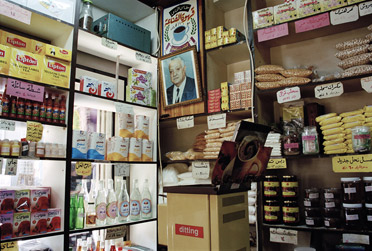
(Image: Fathers, 2006, Taysir Batniji, Digital Print, Courtesy: La B.A.N.K., Paris)
The two series showcased in Intimate Portrayals share an emotional authenticity and convey real concerns over current conditions while transcending the constraints of classic photo reportage.
Intimate Portrayals is curated by Samar Martha.
Supported by Charles Asprey and Rana Sadik.
Images of Palestine: 1982 to 2009

The 2009 PFF Photographic Exhibition comprised an exclusive collection of photographs from multi award winning photojournalist Ryuichi Hirokawa. The exhibition ran alongside the 10th London Palestine Film Festival, on the Mezzanine level of the Barbican Centre from April 24th to May 8th.
Ryuichi Hirokawa attended the Festival for the UK premier of his remarkable documentary NAKBA: Palestine 1948.

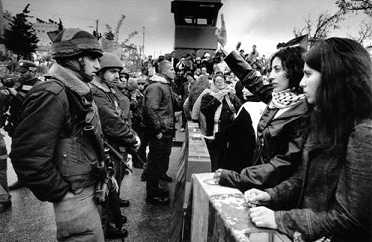
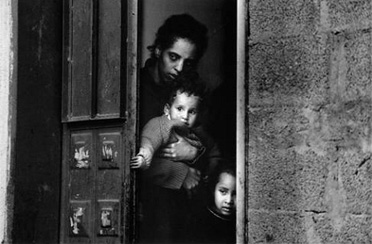
(Images: Ryuichi Hirokawa. All rights reserved)
A Photography Exhibition by Alan Gignoux

Curated by Jenny Christensson, this was the first UK exhibition of Alan Gignoux's "Homeland Lost".
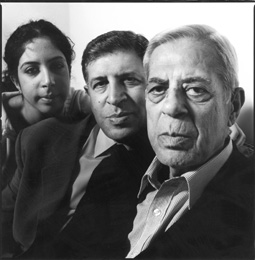 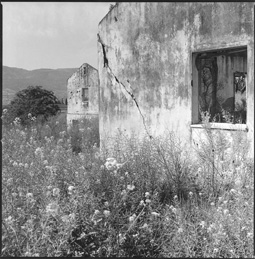

(Images from "Homeland Lost" by Alan Gignoux all rights reserved)
�Homeland Lost� is a photographic interrogation of place and identity
which works through a series of couplets whereby portraits of Palestinian
refugees (individuals and families) are paired with landscape images of
the lands and homes from which they were exiled in 1948. Through this
positioning, the artists aims to explore the many connections between past
and present, as well as place and self. The exhibition was installed in
the Barbican Centre and ran for 4 weeks in April, May 2008, opening with
the 2008 London Palestine Film Festival.
A PDF sample of �Homeland Lost� can be downloaded here, along with the
artist�s statement.
|
 |
 |  |  |
|